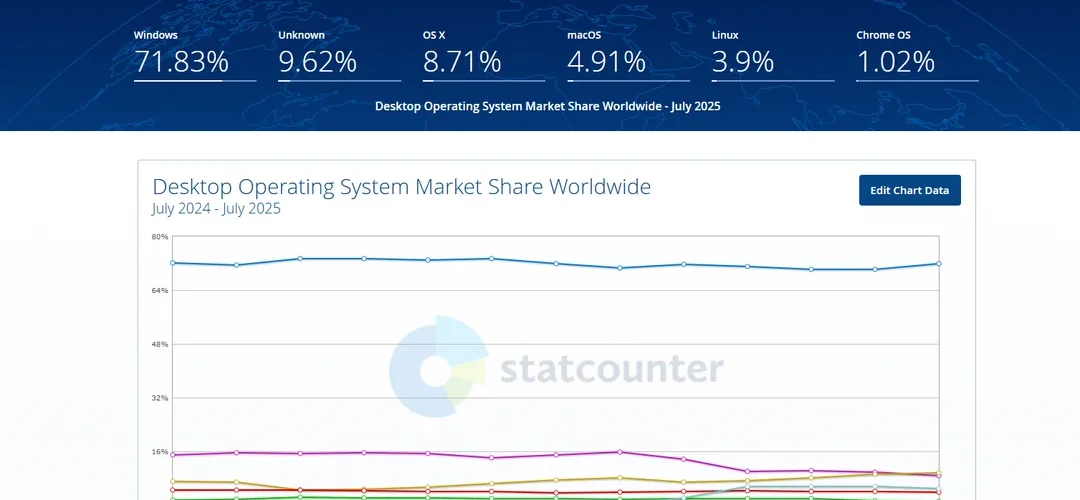In recent years, the operating system landscape has undergone significant changes, particularly with regards to the usage statistics of Windows and Linux. According to the latest market analysis, Windows has experienced a resurgence, reclaiming users who had previously shifted to alternative platforms. In stark contrast, Linux has seen its market share drop below the 4% threshold, a significant decline that has sparked conversations across tech communities.
The increase in Windows users can be attributed to various factors. First, there is a growing recognition of Windows as a versatile and user-friendly operating system, especially among casual users and enterprises. From its intuitive interface to the extensive range of compatible software, including crucial business applications and gaming titles, Windows caters to a broad spectrum of users. The release of Windows 11 has also played a pivotal role in attracting users back, offering enhanced features that focus on productivity, multitasking, and a modern aesthetic that appeals to both younger and older users alike.
On the other hand, the declining market share of Linux raises important questions about its appeal and adoption. Despite being celebrated for its open-source nature, flexibility, and security features, Linux has struggled to penetrate mainstream markets. One key challenge has been the perceived complexity of Linux for non-technical users. While distributions like Ubuntu and Mint aim to simplify the user experience, many potential users still find the learning curve steep compared to the familiarity of Windows.
Moreover, corporate environments that rely heavily on industry-standard applications often stick with Windows due to compatibility issues. Many beloved software products, especially those necessary for business operations, are either not available or are significantly less optimized for Linux. This reality continues to deter organizations from fully transitioning to Linux, subsequently influencing individual users who often follow suit.
The gaming industry represents another crucial battleground where Windows maintains a dominant position. With platforms like Steam and a multitude of AAA-game titles optimized for Windows, gamers often find themselves with little choice but to stick with the Microsoft ecosystem. Although there have been strides in Linux gaming—with initiatives like Proton helping to run Windows games on Linux—Windows still holds an undeniable competitive advantage.
Additionally, Microsoft’s strong marketing and support infrastructures have made it easier for users to feel confident in their operating system choice. Resources like Microsoft Support, extensive online forums, and community-driven help provide Windows users with a reassurance and a safety net that Linux often lacks.
However, it’s essential to consider the ongoing efforts of the Linux community and various organizations advocating for open-source solutions. Initiatives aimed at enhancing user experience, improving compatibility, and increasing the visibility of Linux in both educational and professional settings could reignite interest. Moreover, strategic partnerships with hardware manufacturers and software developers may help foster a more robust ecosystem for Linux, potentially enticing new users in the future.
In conclusion, while Windows has successfully regained user trust and market presence, Linux’s dropping share indicates a significant challenge ahead. The future landscape may very well depend on how each operating system evolves, adapts, and meets the changing needs of users across various sectors. For now, the competition remains fierce, and the choices available to users are more diverse than ever before.





Add comment